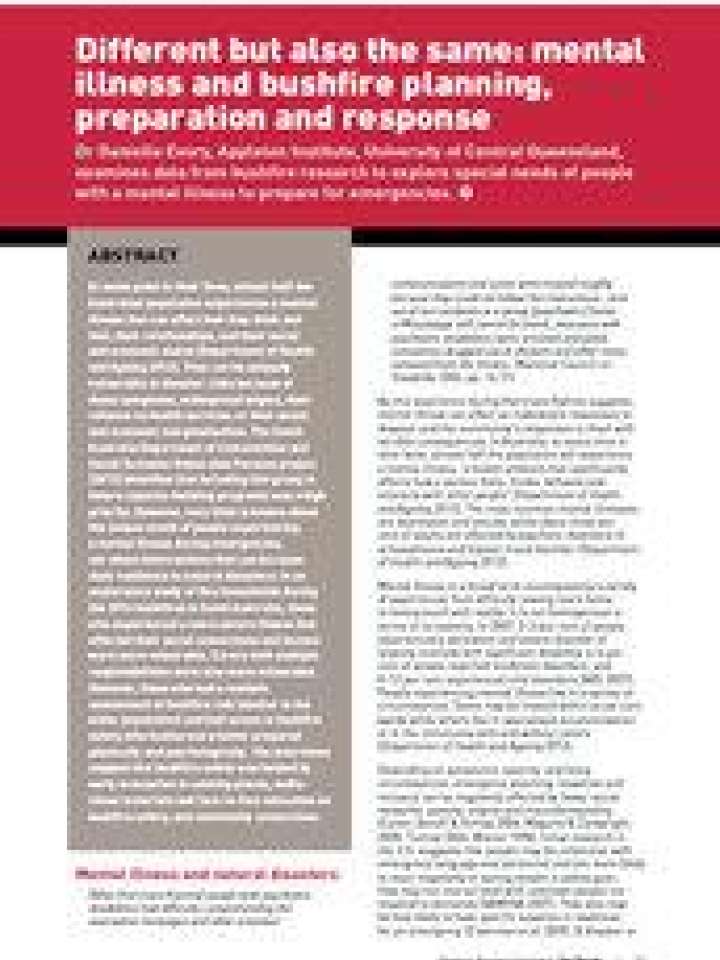Different but also the same: Mental illness and bushfire planning, preparation and response
At some point in their lives, almost half the Australian population experiences a mental illness that can affect how they think and feel, their relationships, and their social and economic status. However, very little is known about the unique needs of people experiencing a mental illness during emergencies, nor about interventions that can increase their resilience to natural disasters. In an exploratory study of five households during the 2014 bushfires in South Australia, those who experienced a more severe illness that effected their social connections and income were more vulnerable. Carers with multiple responsibilities were also more vulnerable.
However, those who had a realistic assessment of bushfire risk (similar to the wider population) and had access to bushfire safety information were better prepared physically and psychologically. The interviews suggest that bushfire safety was helped by early evacuation to calming places, audio-visual materials and face-to-face education on bushfire safety, and community connections. Households that were better prepared had previous experience of bushfires and a realistic assessment of risk in their area, which are protective factors for the general population as well. Their plans all involved early evacuation. This was the primary way to keep calm and reduce anxiety. Symptom-specific preparation and planning, such as ‘packing but not packing’, was useful for those with ADHD and Aspergers syndrome.
Australian Journal of Emergency Management, Volume 3o, Issue 4, October 2015, Pages 37-40. Published under a Creative Commons Attribution-NonCommercial 4.0 International License
Explore further
